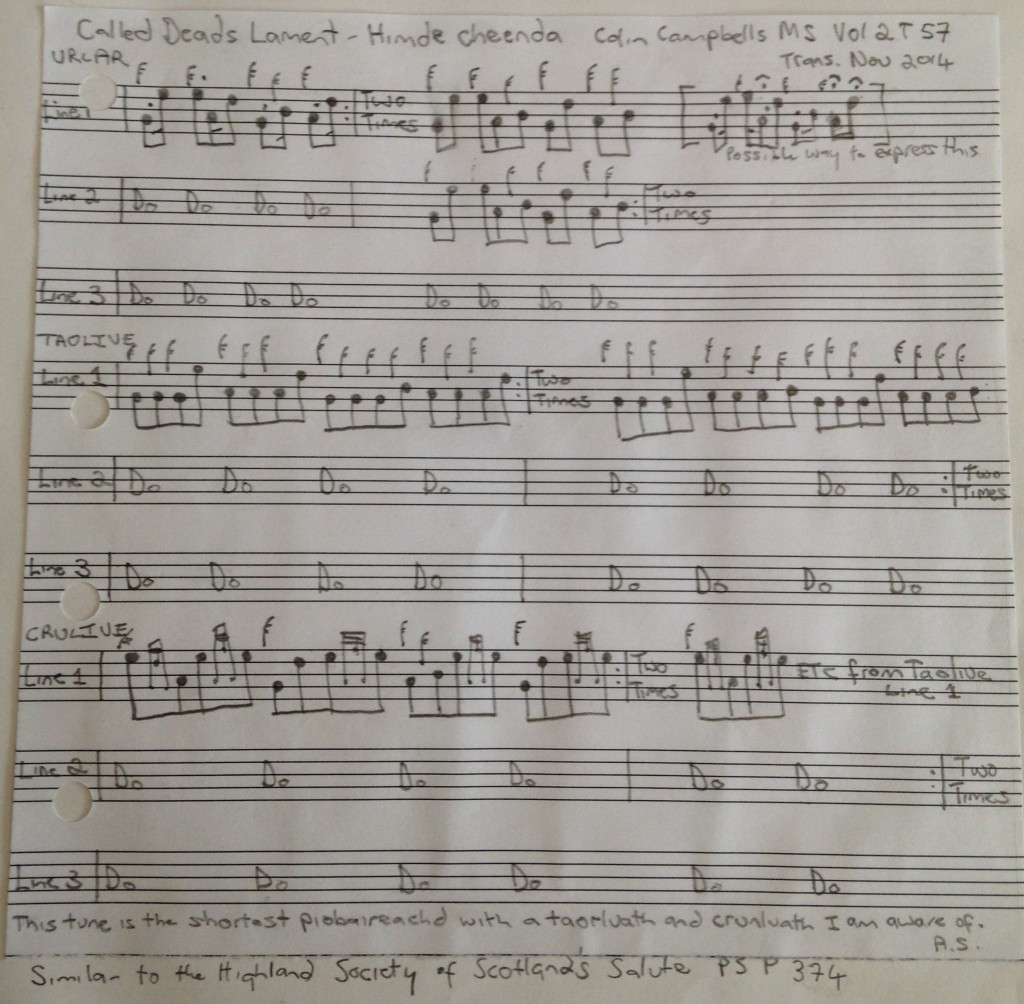by J David Hester, PhD
Stumbling across William Donaldson’s Set Tunes Series, I had been enthralled by the musical opportunities evidenced by the earliest pibroch manuscripts. The differences in expression, movements and settings suggested a history of this art form that was vibrant and expansive. It also suggested that what we hear today at pibroch competitions is a pale ghost of the musical vivacity of the idiom.So I set about collecting everything I could. I got pretty far, but truth be told, all I had done was bring together a bunch of PDFs that other’s had made. Personally, I didn’t mind it, as it meant I had one place I could go to find these treasures – I didn’t have to scour the Internet to locate them.But I realized it simply wasn’t compelling. It was redundant.Then I thought, “Maybe I could find someone to help me. Who is at the forefront of this kind of musical research? Barnaby Brown?” And I reached out to him.The result? Something truly amazing.Together, we worked to assemble a compelling website of information dedicated not only to the electronic dissemination of every known manuscript, score or published volume appearing prior to 1840, but we also brought together the work of Roderick Cannon, Keith Sanger and Allan MacDonald to help us sort, catalog, identify, standardize and understand the over 313 primary source materials.Our site offers arranges the tunes into two broad categories: the collections (of Joseph MacDonald, Donald MacDonald, Peter Ried, Angus MacKay and others), and individual tunes pages. On the collections pages, we provide a brief history of the collection, offer the tunes in alphabetical and numerical order, and cross reference each tune to its tune page.On the tune page, we assemble every extant variant of the tune, provide Gaelic soundfiles by Allan MacDonald for pronunciation of Gaelic titles where they exist, offer citations from Roderick Cannon’s Gaelic Dictionary of Titles for accurate translation and etymology, and have links to Tobar an Dulchais (the great Gaelic Culture Project website) where you can hear old master recordings of the tunes, and even links to Donaldson’s Set Tunes Series.Everything is searchable. Everything is downloadable.Once we completed phase one of this work, I realized that we were missing something: resources that would help interested students and performers of pibroch to understand these scores. After all, the inherited performance tradition of today greatly differs from the scores we see from the late 18th and early 19th century. How can we make heads or tails of unfamiliar movements, unexpected variation structures, and often radically different settings?In order to address this need, we then spun up Learning Living Pibroch. This site is the place where a community of scholar, aficionados and performers can discuss their findings, submit their recordings, and read up on important research. It is an a lively, friendly group of people dedicated to re-expanding the idiom by recovering the musical of the early traditions.But we aren’t stopping there. We have many more plans in mind: from primary source archival materials, to sponsoring live events and recitals.Our impact is beginning to be felt. People are noticing our work: in March, I will be giving a report to the Pibroch Society about our efforts and future plans.But more importantly, what we are seeing is a tectonic shift is taking place. It is a slow, very quiet rumble, but it is there: Never before in the history of pibroch have performers and students had direct, easy access to these primary source materials. Particularly during the 20th century, it was the responsibility of a few, dedicated patrons to collect, standardize and print these tunes. They were constrained by the limited technologies of print media and its costs of publication. the result was an idiom whose tunes “all sound the same.” And how could it be any different, when the work of these great caretakers had the unintended but unavoidable consequence of homogenizing the tunes to a common standard?But now, today, the original music is there for everyone and anyone to encounter directly for themselves. And as a result, the inevitable transformation of the art is taking place: because in the canon of our pibroch literature lies the hitherto neglected and inaccessible evidence of an amazingly vivacious art form that looks and sounds like nothing we hear today. Comparatively speaking, pibroch of 300 years ago had much more going for it than what we hear today.And when you see it, hear it, play it, you never want to go back.Alt Pibroch ClubJ. David Hester currently reside sin Baltimore, MD. He has been playing pipes since he was 8, though with a hiatus of about 25 years. He is a student of Jori Chisholm and Allan MacDonald, and publisher of Alt Pibroch Club websites, in collaboration with Barnaby Brown.
